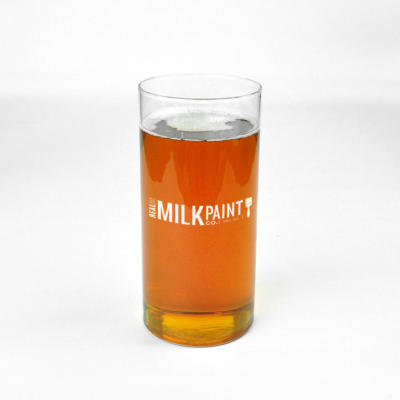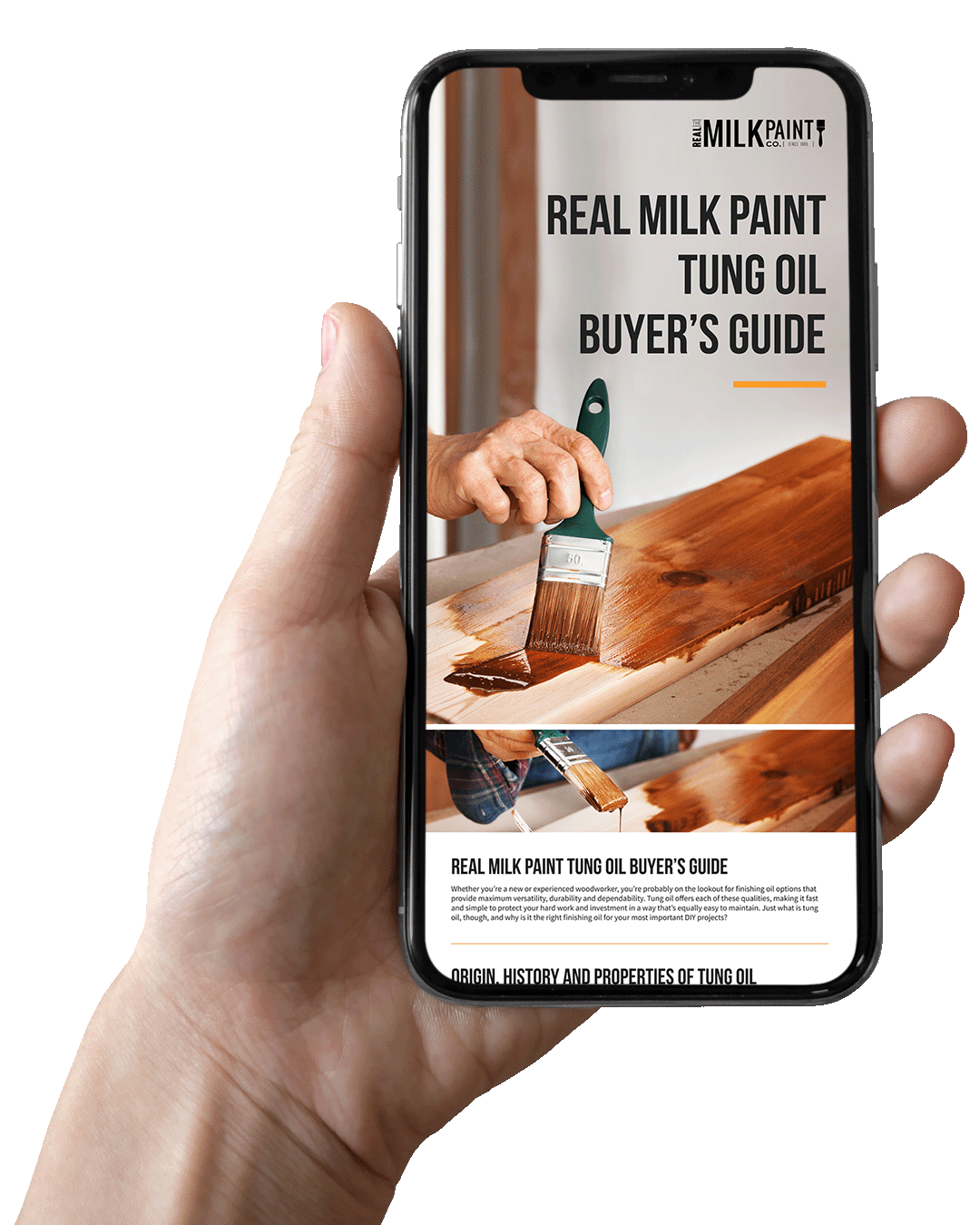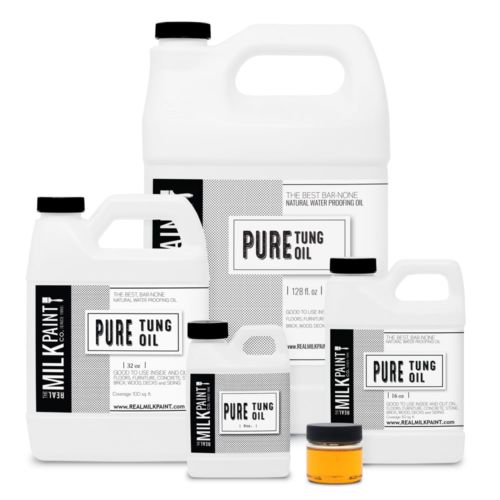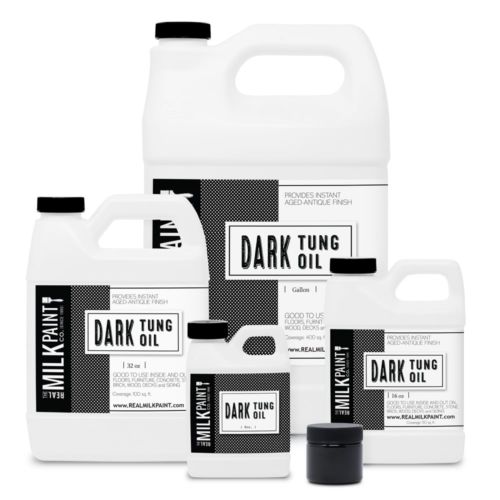 What is Tung Oil?
What is Tung Oil?
Pure Tung oil is a drying oil that’s extracted from the seed of the tung tree, which is native to China and a few other Asian countries. The oil has been used for centuries as a water-resistant finish for boats and other wooden objects, as well as to finish stone. Pure Tung oil is an excellent alternative to other drying oils, such as walnut, linseed and soy.
On top of producing a beautiful and protective finish, tung oil is also a popular choice for projects because it is versatile, easy to use, and environmentally friendly. If you want to know more about tung oil and how to use it, then you’ve come to the right place!
Top Benefits of Using Tung Oil as a Finish
There are many reasons why people love tung oil for their projects, and one of the most popular is its flexible, durable, food safe, and protective waterproof finish that doesn’t mold, darken or go rancid. On a practical note, tung oil also dries faster than other oils, making it easier and less time-consuming to apply. From an aesthetic standpoint, tung oil also cures to a beautiful matte finish that adds depth to woodgrain, producing an antique-style finish on any surface.
Difference Between Pure and Dark Tung Oil
As the name suggests, the pure tung oil is free of additives and distillates, meaning it doesn’t create a glossy or heavy finish. Pure tung oil dries to a honey color. The only difference with dark tung oil is that we’ve added a non-carcinogenic and PCB-free resinous hydrocarbon that gives the oil a darker and richer finish.
The Many Uses of Tung Oil
Carpenters, woodworkers, crafters, and hobbyist alike all love tung oil, and over the years they’ve used it as a beautiful and protective finish on a wide number of projects and surfaces. For instance, tung oil has been used with fantastic results to finish wood, bamboo, concrete, stone, brick, and even metal surfaces. Tung oil is a favorite for finishing wood floors, cabinetry, decks, siding, furniture, guitars and other musical instruments, handmade toys, and more. If you’re wondering if it’s the right wood oil for your project, it probably is!
How Much Do You Need for Your Project?
A gallon of tung oil will cover 400 square feet of surface. Depending on how porous the surface is, you could need up to 5 coats. To cover a 400-square-foot area, for instance, you would need a little over 2 gallons each of oil and solvent (for thinning) or 5 gallons of our pre-thinned options. Want to take the guess work out? Then using our handy Finishing Oil Calculator!
Easy-to-Follow Steps for Applying Tung Oil to Your Projects
1. Clean the surface
The proper application of tung oil depends on you starting with a clean and prepared surface. Before you start, make sure there’s no grease, oil, dirt, dust, or other contaminants on the surface.
If necessary, start by sanding or stripping the surface to remove any coating or finish that’s already there. Tung oil can only be applied to bare surfaces or over another coat of tung oil. Follow that up by cleaning the surface with trisodium phosphate. Sand the surface one more time with 150-grit sandpaper, and then vacuum well to remove all dust.
2. Thin the oil
A thinner will make the tung oil easier to apply, faster to dry, and will improve penetration. The only time you shouldn’t thin the oil first is if you’re applying it to weathered wood, concrete, old and unfinished wood floors, or other highly absorbent surfaces. To thin the oil, combine it with equal parts Citrus Solvent, mineral spirits, or Odorless Mineral Spirits before application. Do not use a mineral spirit or odorless mineral spirit marketed as “green”, “eco-friendly”, or similar verbiage. These do not mix with the tung oil and will create adverse effects on your finish. You could also choose one of our pre-thinned options, Half & Half or Dark Half, to use straight out of the bottle!
3. Apply a generous first layer
You can apply the oil with a natural bristle brush, a sponge brush, or a soft and lint-free rag. Apply the oil liberally to the surface. Unlike varnish, which sits on top of the wood, the goal with tung oil is to thoroughly saturate the wood cells. When you’ve applied the first coat, let the oil absorb.
4. Apply subsequent coats
After the first coat has absorbed, apply a second coat. Continue this process of applying coats, waiting 40 minutes between coats if necessary, until over 80 percent of the surface stays glossy for at least 40 minutes. This means the wood cells have been saturated and you can move to the next step. Decorative items may need two to four coats, while functional surfaces that will be handled, used, or walked on will need a minimum of three to five.
5. Removing unabsorbed oil from the surface.
After you’ve applied multiple coats and the wood won’t absorb any more oil, use a clean rag to wipe the surface. If there are any puddles of oil on the surface, mop them up with the rags. This is important as you don’t want the tung oil to start curing on the surface.
At this point, your surface is fully saturated. However, the pure tung oil will settle inside the wood/material overnight on through the next day. To get the best finish we recommend applying one or two more coats of the oil, following the instructions previously stated, after this period of waiting. Make sure to wipe up oil that’s on the surface that does not absorb. Hang oil-soaked rags separately outside to dry before disposing.
6. Let the oil cure for up to 30 days
From here, the oil will need a week to 10 days to start curing, and 15 days to 30 days to fully cure. Do not put the tung oiled object in direct sunlight for an extended period of time. For the first 10 days of curing, check and wipe up any tung oil that may seep to the surface. During this curing time, you can walk on floors with clean shoes, but avoid placing heavy objects on the floor or walking on it with dirty shoes. (Tip: put old rags under your shoes to walk across the surface no matter what shoes you’re wearing.) There are no other sealers or protective products needed on top of your oil. It naturally seals, waterproofs, and protects your surfaces!
7. Cleaning your surfaces
Pure tung oil is easy to clean! For your floors or other wooden objects, just simply use hot water and standard dish soap. That’s it!
8. Reapply as necessary to revive and provide more protection
Surfaces that are used often or walked on frequently may need some maintenance to revive their look and add more protection. To do this, simply mix 2 parts thinner to 1 part tung oil and wipe down your surfaces. Allow time to dry as necessary.
Pure Tung oil has been popular for thousands of years, thanks to the protective and waterproof finish it creates on wood and other porous surfaces. These days, pure tung oil is also gaining momentum because it’s non-toxic, environmentally friendly, and food safe, meaning it’s ideal for kitchenware, butcher block, cutting boards, countertops, and even toys!
Applying tung oil is easy and effective! The main tips to remember are: don’t leave excess oil on the surface during the curing phase, no sanding necessary between coats, no other sealer or topcoats needed and use 2 parts thinner to 1 part tung oil for maintenance.

Myths and Facts About Tung Oil
Myth: Tung oil is a recent find, just hitting the market in the 1960s.
Fact: Tung oil is thousands of years old.
Many people think tung oil only just emerged in 1965, when Homer Formsby put his special tung-oil based formulation on the market. While we undoubtedly owe a lot to Formsby for popularizing this incredible oil, his product was a slight reinvention of an oil first found in writings by Confucius way back in 500 B.C. There’s a reason tung oil is also known as China wood oil. The Chinese have long turned to the tung nut as a treatment for a variety of ailments, as well as a waterproofing agent for their handmade boats. Today, we’re able to use this ancient “secret” to give all kinds of woodworking crafts and up-cycled furniture a gorgeous new look.
Myth: Tung oil never dries and is a real pain to work with.
Fact: Tung oil takes long to dry, but it does dry.
While it’s true it takes tung oil a little longer to dry than lesser oils and you’ll need to put in a little more effort to achieve the perfect finish, all that time on the front end means a long-lasting, more brilliant result you’ll enjoy for years to come. Remember, fast-drying oils leave you no time to correct mistakes, and that’s a lot of pressure when you value quality over speed.
Myth: There’s no reason to buy tung oil when I can get boiled linseed oil (BLO) for less money.
Fact: Pure tung oil is pure, won’t discolor and features a host of other benefits lacking in BLO.
If you process flax seeds you get linseed oil, a compound with a storied history almost as long as the one associated with tung oil, but the comparisons stop there. While linseed oil may be cheaper, it also has added metal compounds and dries faster. The latter may seem like a good thing, but it can make an even finish harder to come by unless you’re committed to working at a furious pace.
BLO is also prone to yellowing with age and can go rancid or even lead to mildew. Tung oil, on the other hand, retains some flexibility when it hardens — ideal for wooden joints and the like — and has waterproofing qualities that keep your beautiful finish intact.
Myth: Tung oil is a risky choice for anyone suffering from a nut allergy.
Fact: Not necessarily because tung nuts aren’t actually nuts!
Tung nuts are actually the seeds inside the fruit of the tung tree. They fall into a category called “drupes,” which also includes other fleshy fruits surrounding a “pit” or shelled seed, such as cherries, plums, peaches and even almonds and pecans. It’s not at all unusual for someone who has a tree nut allergy to be perfectly fine with consuming drupes. Peanuts, by the way, are technically legumes. Even if you can’t eat peanut butter, you may be able to safely enjoy coconut, peaches, pistachios, and yes, even tung nuts and the resulting oil.
Click the link to buy Pure Tung Oil or call us at 800-339-9748 to get started. Our team is happy to help you find the product you need from non-toxic paint that is 100% organic to wood wax or paste to complete your project.






